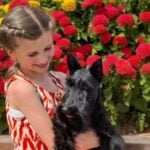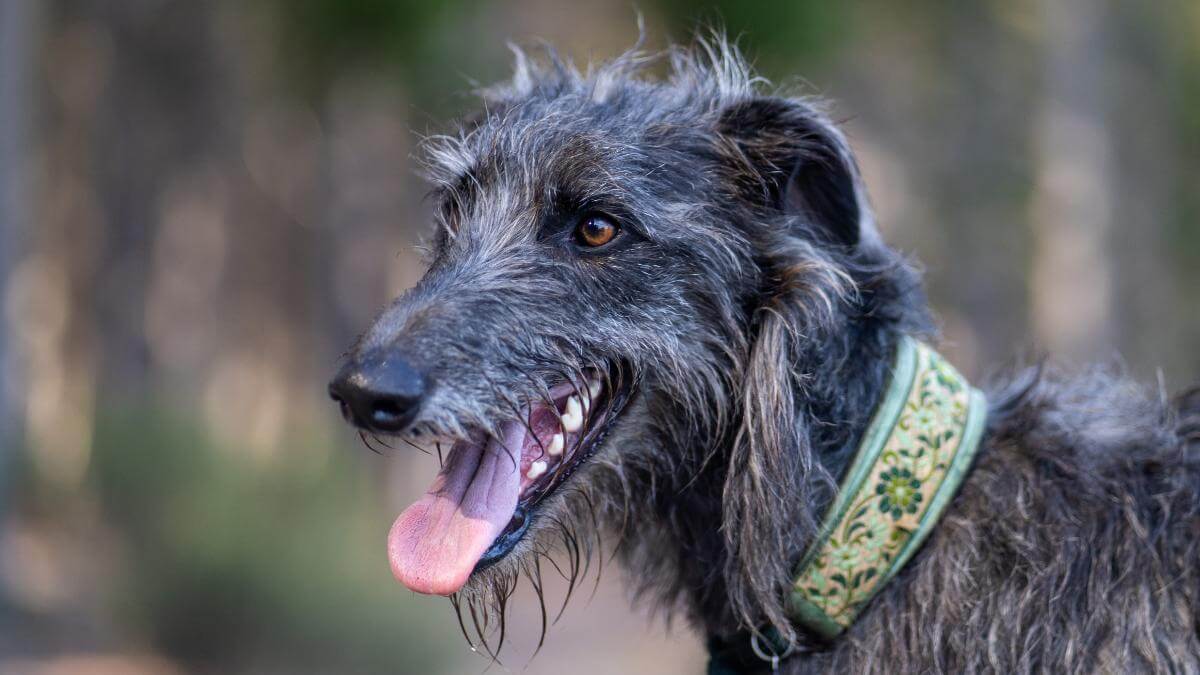
Home » The Scottish Deerhound A History of the Breed and Its Standard

This article was originally published in Showsight Magazine, June 2011 issue.
Deerhounders are very protective of our Breed Standard and Points. Changed only once (in 1935) since it was written in the late 1900s, we fought the AKC’s move to reformat our breed standard in 1985 when they were convincing other Breed clubs to do so. In partnership with the IWCA’s Sam Ewing, we threatened to sue the AKC if they tried to alter our Standards without our consent. We made it very clear that our Breed Clubs were the exclusive owners of their Standards, evidently a fact that the AKC had never considered. Within the year the AKC [grudgingly] agreed that this was so and that changing the Standards could only be done if the Breed Clubs deemed it necessary.
The use of the Deerhound for hunting was pretty much a thing of the past after the break up of the Clans and their lands during the late 1800s. Because the dogs did not respect the borders of the now smaller forests and the landowners did not want to have their herds run into the neighboring forests, the use of rifles and tracking dogs became the hunting norm. Now without a “job,” the breed would have died out had it not been for some devoted Englishmen and the development of the Dog Show. A Standard was written with the help of those who still hunted with the breed. Their input is reflected in the picturesque language, for example, describing the back as “this formation being unsuited for uphill work”. The change made in 1935 was to the height and weight. The height was raised to 30-32, from 28-30 for males, 28 min for females from 26. The writers did not put an upper limit on females feeling it was unnecessary as they could not imagine a bitch ever reaching a dog’s height. As the Clans broke up, many Scots emigrated to Canada, US, and Australia, taking their dogs with them. The elk on the North American continent provided great hunts, as did the “Roo” in Australia. There is a painting of General Custer sitting outside his tent with a brace of fawn Deerhounds lolling next to him. There were six Deerhounds entered at the first Westminster Kennel Club: two from Custer’s kennel, one from the British Prince Consort’s kennel, and three local dogs. Custer’s kennel was kept up by an Aide to the General after his death at Little Big Horn. The AKC formed shortly after the Show and records show that Bonnie Robin #4345 was registered in 1886.
There had been other clubs formed over the years, but the SDCA, formed in the early 60s, has been in existence continuously since that time. The SDCA is an AKC member club. The SDCA is proud to still have two of the original charter members still with us: Gayle Bontecou, Gayleward, and Kate Lyons, Lyonhill Kennels. Prior to 1976, Specialties were held mainly in the east with entries of about 16 dogs. The SDCA’s first independent Specialty was held in St. Louis in 1976 with an entry of 68 Deerhounds. It was decided to rotate the National Specialties around the country rather than always holding them in one place as many other parent clubs do. The west coast Specialty has been held as far east as Denver but mostly takes place in California or Oregon. The mid west and east coast Specialties have been held in many different locations in those regions. From that first entry of 68 Deerhounds, our National Specialty entries range from over 100 in the west to well over 200 in the midwest and east. In addition to the National, there is also an Eastern Regional held in the Mid Atlantic States and a Western Regional in southern California each year.